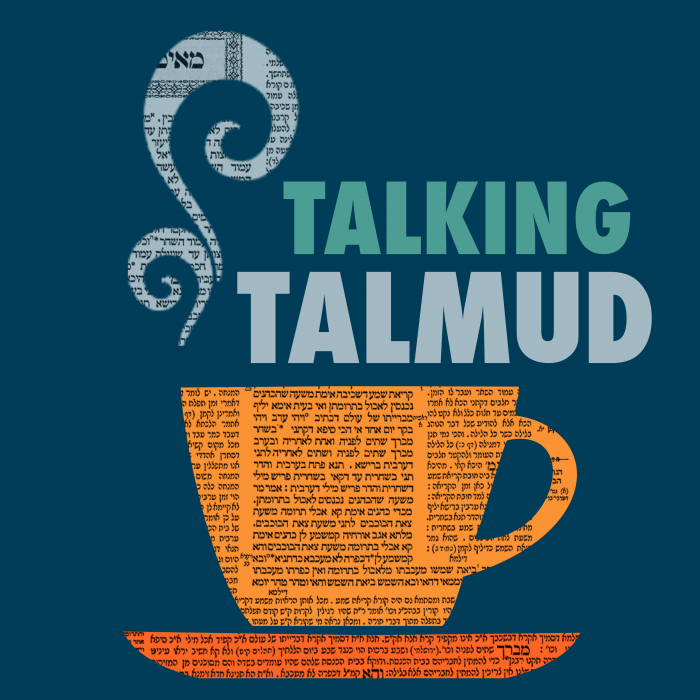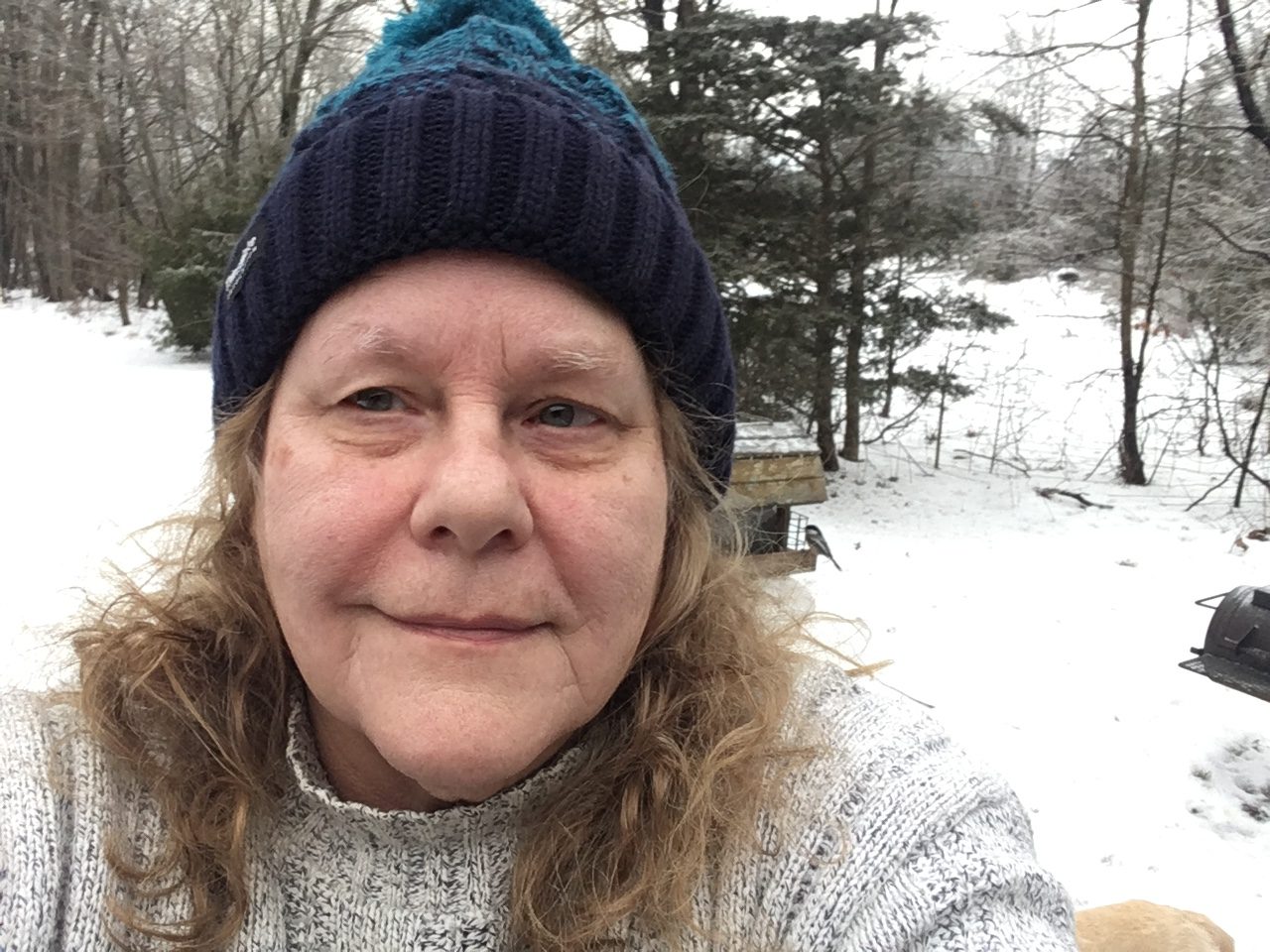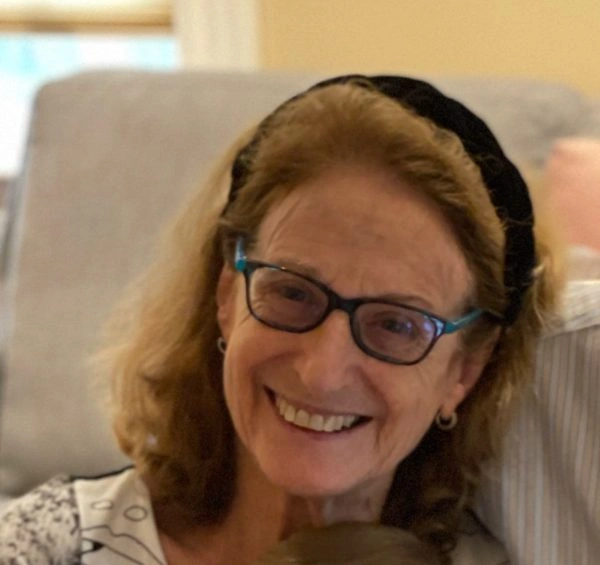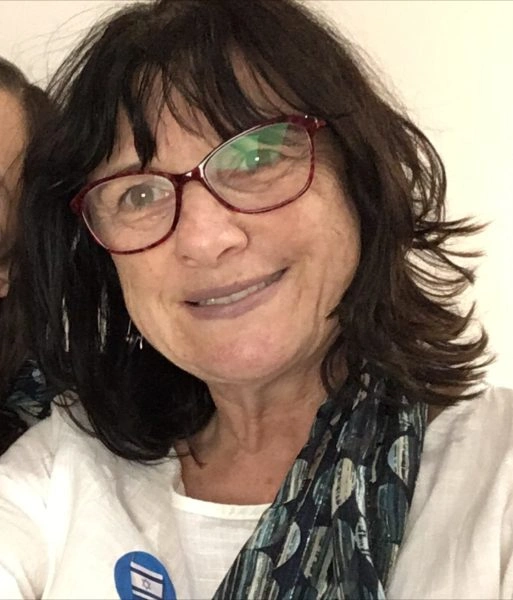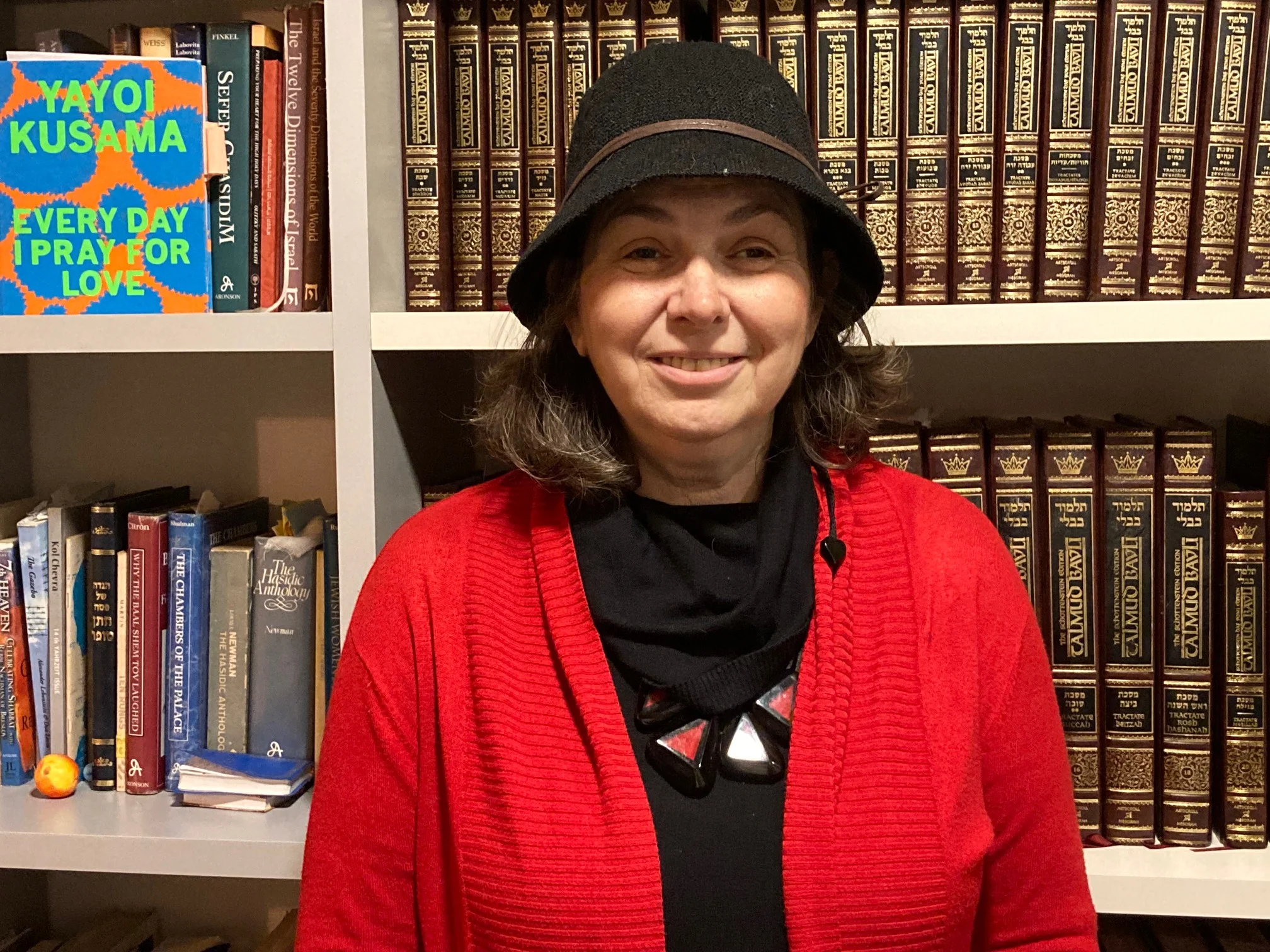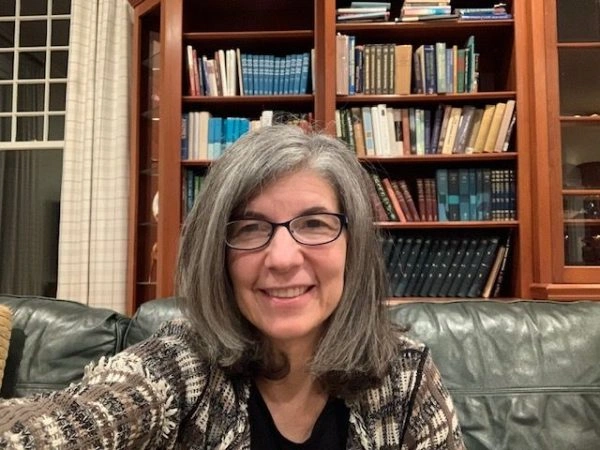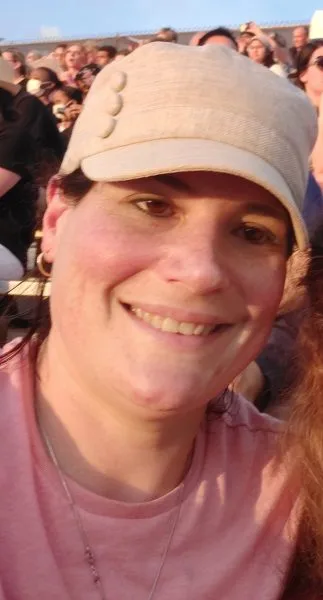Shabbat 29
גּוֹי שֶׁחָקַק קַב בִּבְקַעַת — יִשְׂרָאֵל מַסִּיקָהּ בְּיוֹם טוֹב. וְאַמַּאי? נוֹלָד הוּא! לְדִבְרֵיהֶם דְּרַבִּי אֱלִיעֶזֶר וְרַבִּי עֲקִיבָא קָאָמַר לֵיהּ, וְלֵיהּ לָא סְבִירָא לֵיהּ.
When a gentile carved out a vessel the size of a kav from a piece of wood on a Festival and thereby rendered it a new vessel, a Jew may burn the vessel on a Festival ab initio. And why may he do so? This new vessel that was made from the wood is an object that came into being [nolad] on a Festival, and is set-aside [muktze]. Since Rav Adda bar Ahava permitted doing so, apparently he holds that the laws of set-aside do not apply on a Festival, contrary to the opinion of Rabbi Yehuda. The Gemara answers: Rav Adda bar Ahava said this statement in explanation of the statements of Rabbi Eliezer and Rabbi Akiva in the mishna; however, he himself does not hold that way. Although he explained the opinions in the mishna in accordance with the opinion of Rabbi Yehuda, he himself does not hold that that is the halakha.
רָבָא אָמַר, הַיְינוּ טַעְמָא דְּרַבִּי אֱלִיעֶזֶר: לְפִי שֶׁאֵין מַדְלִיקִין בִּפְתִילָה שֶׁאֵינָהּ מְחוֹרֶכֶת וְלֹא בִּסְמַרְטוּטִין שֶׁאֵינָן מְחוֹרָכִין. אֶלָּא הָא דְּתָנֵי רַב יוֹסֵף ״שָׁלֹשׁ עַל שָׁלֹשׁ מְצוּמְצָמוֹת״ לְמַאי הִלְכְתָא? לְעִנְיַן טוּמְאָה. דִּתְנַן: שָׁלֹשׁ עַל שָׁלֹשׁ שֶׁאָמְרוּ — חוּץ מִן הַמְּלָל, דִּבְרֵי רַבִּי שִׁמְעוֹן. וַחֲכָמִים אוֹמְרִים: שָׁלֹשׁ עַל שָׁלֹשׁ מְכֻוּוֹנוֹת.
Rava said, this is the reasoning behind Rabbi Eliezer’s opinion with regard to lighting the wick: Because he holds that one may neither light on Shabbat using a wick that is not slightly singed and prepared for lighting nor light with rags that were not singed before Shabbat. If a person singes the wick slightly before lighting it, it will burn well. A wick that has not been singed does not burn well and will not show the appropriate deference to Shabbat. The Gemara asks: If so, that which Rav Yosef taught: Three by three exactly, to what halakha is it relevant? According to Rava’s explanation, the precise size of the garment used in making the wick is irrelevant. The Gemara responds: Rav Yosef’s statement was with regard to another matter, the halakhot of ritual impurity. As we learned in a mishna in tractate Kelim: Three by three fingerbreadths that they stated as the smallest sized garment that can become ritually impure, excludes the portion used for the hem, i.e., those threads that emerge at the edge of the garment and are sewn into a hem; this is the statement of Rabbi Shimon. And the Rabbis say: Three by three exactly, even including the hem. That is the context of Rav Yosef’s statement: Three by three exactly.
אָמַר רַב יְהוּדָה אָמַר רַב: מַסִּיקִין בְּכֵלִים וְאֵין מַסִּיקִין בְּשִׁבְרֵי כֵלִים, דִּבְרֵי רַבִּי יְהוּדָה. וְרַבִּי שִׁמְעוֹן מַתִּיר. מַסִּיקִין בִּתְמָרִין, אֲכָלָן אֵין מַסִּיקִין בְּגַרְעִינֵיהֶן, דִּבְרֵי רַבִּי יְהוּדָה. וְרַבִּי שִׁמְעוֹן מַתִּיר. מַסִּיקִין בֶּאֱגוֹזִים, אֲכָלָן אֵין מַסִּיקִין בִּקְלִיפּוֹתֵיהֶן, דִּבְרֵי רַבִּי יְהוּדָה. וְרַבִּי שִׁמְעוֹן מַתִּיר.
With regard to the statement cited above, Rav Yehuda said that Rav said that there is a dispute between the tanna’im on this issue: One may only kindle a fire with whole vessels and one may not kindle a fire with broken vessels; this is the statement of Rabbi Yehuda. And Rabbi Shimon permits kindling a fire even with broken vessels. An additional halakha: One may kindle a fire with whole dates on a Festival, and if he ate them, he may not kindle a fire with their pits as they are set-aside; this is the statement of Rabbi Yehuda. And Rabbi Shimon permits kindling a fire with the pits. Furthermore, one may kindle a fire with whole nuts on a Festival, and if he ate them, he may not kindle a fire with their shells; this is the statement of Rabbi Yehuda. And Rabbi Shimon permits doing so.
וּצְרִיכָא. דְּאִי אַשְׁמְעִינַן קַמַּיְיתָא, בְּהַהִיא קָאָמַר רַבִּי יְהוּדָה, מִשּׁוּם דְּמֵעִיקָּרָא כְּלִי וְהַשְׁתָּא שֶׁבֶר כְּלִי, וְהָוֵה לֵיהּ נוֹלַד, וְאָסוּר. אֲבָל תְּמָרִים, דְּמֵעִיקָּרָא גַּרְעִינִין וְהַשְׁתָּא גַּרְעִינִין — אֵימָא שַׁפִּיר דָּמֵי. וְאִי אַשְׁמְעִינַן גַּרְעִינִין, הֲוָה אָמֵינָא דְּמֵעִיקָּרָא מִכַּסְּיָין וְהַשְׁתָּא מִיגַּלְּיָין. אֲבָל קְלִיפֵּי אֱגוֹזִין, דְּמֵעִיקָּרָא מִיגַּלּוּ וְהַשְׁתָּא מִיגַּלּוּ — אֵימָא שַׁפִּיר דָּמֵי. צְרִיכָא.
The Gemara comments: And it was necessary to cite all three of these cases because each teaches a novel idea. As, had Rav taught us only the first halakha, we would have thought that it is specifically in that case, with regard to burning broken vessels, that Rabbi Yehuda said that it is prohibited, as initially it was a vessel and now it is a broken vessel, and therefore it is considered an object that came into being [nolad] and prohibited; however, dates, initially there were pits in the dates and now they remain pits, say that one may well do so. And had Rav taught us only with regard to date pits I would have said that they are prohibited because initially they were concealed within the fruit and now they are exposed, it is a case of an object that came into being and prohibited. However, nutshells, which initially were exposed and now are exposed, as they were before, say that one may well do so. Therefore, it was necessary to teach all of these cases.
וְהָא דְּרַב לָאו בְּפֵירוּשׁ אִיתְּמַר, אֶלָּא מִכְּלָלָא אִיתְּמַר. דְּרַב אֲכַל תַּמְרֵי וּשְׁדָא קַשְׁיָיתָא לְבוּכְיָא. אֲמַר לֵיהּ רַבִּי חִיָּיא: בַּר פַּחֲתֵי, כְּנֶגְדּוֹ בְּיוֹם טוֹב אָסוּר. קַבְּלַהּ מִינֵּיהּ אוֹ לָא קַבְּלַהּ מִינֵּיהּ?
And the Gemara adds: This halakha of Rav was not stated explicitly; rather, it was stated by inference based on conclusions drawn from Rav’s actions and not from his explicit statements. There was an instance where Rav ate dates on a weekday and threw the pits into the oven. Rabbi Ḥiyya said to him: Son of noblemen, the corresponding action, throwing pits into an oven, is prohibited on a Festival. The Gemara asks: Did Rav accept this halakha from him or did he not accept it from him?
תָּא שְׁמַע: דְּכִי אֲתָא רַב לְבָבֶל, אֲכַל תַּמְרֵי וּשְׁדָא קַשְׁיָיתָא לְחֵיוָתָא. מַאי לָאו בְּפַרְסָיָיאתָא, וְלָא קַבְּלַהּ? — לָא, בַּאֲרַמָּיָאתָא — הוֹאִיל וַחֲזֵי אַגַּב אִימַּיְיהוּ.
Come and hear: When Rav came from Eretz Yisrael to Babylonia, he ate dates on a Festival and threw their pits to the animals so that they may eat them. Wasn’t it a case involving Persian dates, which are quality dates whose fruit comes completely off the pits, leaving the pits with no trace of fruit? Ostensibly, they are completely set-aside as they are of no use at all to people. And the fact that Rav threw the pits to the animals indicates that he did not accept this halakha from Rabbi Ḥiyya, and he holds that there is no prohibition in that case. The Gemara replies: No, this is a case involving Aramean dates whose fruit does not come off completely, and remnants of the date remain attached to the pit. These pits, since they are still fit for use due to their mother, i.e., the fruit itself, one is permitted to carry them.
אֲמַר לֵיהּ רַב שְׁמוּאֵל בַּר בַּר חָנָה לְרַב יוֹסֵף: לְרַבִּי יְהוּדָה דְּאָמַר מַסִּיקִין בְּכֵלִים וְאֵין מַסִּיקִין בְּשִׁבְרֵי כֵלִים, כֵּיוָן דְּאַדְלֵיק בְּהוּ פּוּרְתָּא הָוֵה לֵיהּ שִׁבְרֵי כֵלִים, וְכִי קָא מְהַפֵּךְ — בְּאִיסּוּרָא קָא מְהַפֵּךְ? — דַּעֲבַד כִּדְרַב מַתְנָה. דְּאָמַר רַב מַתְנָה אָמַר רַב: עֵצִים שֶׁנָּשְׁרוּ מִן הַדֶּקֶל לְתַנּוּר בְּיוֹם טוֹב, מַרְבֶּה עֵצִים מוּכָנִין וּמַסִּיקָן.
Rav Shmuel bar bar Ḥana said to Rav Yosef: According to the opinion of Rabbi Yehuda, who said that one may kindle a fire with whole vessels, and one may not kindle a fire with broken vessels, how it is possible to use whole vessels? Once they are ignited a bit, they become broken vessels, and when one turns the wood over to accelerate their ignition, he turns them over in a prohibited manner, as it is prohibited to light with broken vessels. The Gemara answers: This is a case where he acted in accordance with the statement of Rav Mattana. As Rav Mattana said that Rav said: Branches that fell from a palm tree into an oven on a Festival, since these branches were attached to the tree at the onset of the Festival, they are set-aside and it is prohibited to move them. Nevertheless, he can remedy the situation if he adds wood that was prepared for burning prior to the Festival, until the majority of the wood in the oven is not set-aside, and then kindles them. Since the majority of the wood is permitted, he need not concern himself with the minority. One may do the same when burning vessels by adding wood that is not set-aside.
רַב הַמְנוּנָא אָמַר: הָכָא בְּפָחוֹת מִשְּׁלֹשָׁה עַל שְׁלֹשָׁה עָסְקִינַן, מִקּוּלֵּי מַטְלָנִיּוֹת שָׁנוּ כָּאן.
Rav Hamnuna said a different explanation of the dispute in the mishna. In his opinion, here we are dealing with a garment that is smaller than three by three handbreadths, and they taught here halakhot established by the Sages with regard to insignificant small cloths.
וְאָזְדָא רַבִּי אֱלִיעֶזֶר לְטַעְמֵיהּ וְרַבִּי עֲקִיבָא לְטַעְמֵיהּ. דִּתְנַן: פָּחוֹת מִשְּׁלֹשָׁה עַל שְׁלֹשָׁה שֶׁהִתְקִינוֹ לִפְקֹק בּוֹ אֶת הַמֶּרְחָץ וּלְנַעֵר בּוֹ אֶת הַקְּדֵירָה וּלְקַנֵּחַ בּוֹ אֶת הָרֵחַיִים — בֵּין מִן הַמּוּכָן וּבֵין שֶׁאֵין מִן הַמּוּכָן — טָמֵא, דִּבְרֵי רַבִּי אֱלִיעֶזֶר. וְרַבִּי יְהוֹשֻׁעַ אוֹמֵר: בֵּין מִן הַמּוּכָן וּבֵין שֶׁלֹּא מִן הַמּוּכָן — טָהוֹר. רַבִּי עֲקִיבָא אוֹמֵר: מִן הַמּוּכָן — טָמֵא, וְשֶׁלֹּא מִן הַמּוּכָן — טָהוֹר. וְאָמַר עוּלָּא, וְאִיתֵּימָא רַבָּה בַּר בַּר חָנָה אָמַר רַבִּי יוֹחָנָן: הַכֹּל מוֹדִים זְרָקוֹ בָּאַשְׁפָּה — דִּבְרֵי הַכֹּל טָהוֹר.
And Rabbi Eliezer followed his line of reasoning expressed elsewhere, and Rabbi Akiva followed his line of reasoning expressed elsewhere. As we learned in a mishna in tractate Kelim: A cloth smaller than three by three handbreadths that was utilized to plug the bath, and to pour from a boiling pot, and to wipe the millstone, whether this cloth was expressly prepared for that purpose or whether it was not prepared, it can become ritually impure; this is the statement of Rabbi Eliezer. And Rabbi Yehoshua says: Whether it was prepared or whether it was not prepared, it is ritually pure, i.e., it cannot become ritually impure. Rabbi Akiva distinguishes between the cases and says: If it was prepared it is ritually impure, and if it was not prepared it is ritually pure. And Ulla said, and some say that Rabba bar bar Ḥana said that Rabbi Yoḥanan said: Everyone agrees that a cloth this size, if one threw it into the garbage dump, it is ritually pure. His discarding of the cloth indicates that he no longer considers this cloth a garment and no longer considers it significant.
הִנִּיחוֹ בְּקוּפְסָא — דִּבְרֵי הַכֹּל טָמֵא. לֹא נֶחְלְקוּ אֶלָּא שֶׁתְּלָאוֹ בְּמַגּוֹד אוֹ שֶׁהִנִּיחוֹ לַאֲחוֹרֵי הַדֶּלֶת. רַבִּי אֱלִיעֶזֶר סָבַר מִדְּלֹא זְרָקוֹ בָּאַשְׁפָּה דַּעְתֵּיהּ עִילָּוֵיהּ. וּמַאי קָרֵי לֵיהּ ״שֶׁלֹּא מִן הַמּוּכָן״ — דִּלְגַבֵּי קוּפְסָא לָאו מוּכָן הוּא. וְרַבִּי יְהוֹשֻׁעַ סָבַר מִדְּלֹא הִנִּיחוֹ בְּקוּפְסָא בַּטּוֹלֵי בַּטְּלֵיהּ, וּמַאי קָרֵי לֵיהּ ״מוּכָן״ — דִּלְגַבֵּי אַשְׁפָּה מוּכָן הוּא. וְרַבִּי עֲקִיבָא, בִּתְלָאוֹ בְּמַגּוֹד סָבַר כְּרַבִּי אֱלִיעֶזֶר, בְּהִנִּיחוֹ אֲחוֹרֵי הַדֶּלֶת סָבַר לַהּ כְּרַבִּי יְהוֹשֻׁעַ.
If one placed it in a box, everyone agrees that it can become ritually impure because his placing the cloth in a box indicates that he considers the cloth significant and is keeping it in order to use it. They only disagreed in a case where one hung the garment on a dryer, i.e., a stake in the wall, or where he placed it behind a door. Rabbi Eliezer held: From the fact that he did not throw it in the garbage dump, it is certainly on his mind and he is planning to use it. And what is the reason that he called it not prepared? It is because, relative to a cloth placed in a box, it is not considered prepared for use. And Rabbi Yehoshua held that since he did not place it in a box, certainly he has negated its garment status. And what is the reason that he called it prepared? Because relative to one thrown in the garbage, this garment is prepared for use, although, in fact, the cloth has already been negated. And Rabbi Akiva, in the case where he hung it on a dryer, held in accordance with the opinion of Rabbi Eliezer that one has not yet negated it from use and it can therefore become ritually impure. In the case where he placed it behind a door, Rabbi Akiva held in accordance with the opinion of Rabbi Yehoshua that, in doing so, he negated its garment status, and it can no longer become ritually impure.
וַהֲדַר בֵּיהּ רַבִּי עֲקִיבָא לְגַבֵּיהּ דְּרַבִּי יְהוֹשֻׁעַ. מִמַּאי? אָמַר רָבָא: מִדְּקָתָנֵי ״פְּתִילַת הַבֶּגֶד״. מַאי אִירְיָא דְּתָנֵי ״פְּתִילַת הַבֶּגֶד״? לִיתְנֵי ״פְּתִילָה שֶׁל בֶּגֶד״. מַאי ״פְּתִילַת הַבֶּגֶד״ — דַּעֲדַיִין בֶּגֶד הוּא.
The Gemara comments: And Rabbi Akiva retracted his opinion in favor of the opinion of Rabbi Yehoshua and held in accordance with his opinion. And from where do we know this? Rava said: From the term that we learned in our mishna: The wick of a garment [petilat habeged]. Why did it specifically teach: The wick of a garment? Teach that halakha using the phrase: A wick made from a garment. What is the reason that the mishna taught: A wick of a garment? It is because it remains a garment. Nevertheless, Rabbi Akiva deemed it ritually pure, in accordance with the opinion of Rabbi Yehoshua.
מַתְנִי׳ לֹא יִקּוֹב אָדָם שְׁפוֹפֶרֶת שֶׁל בֵּיצָה וִימַלְּאֶנָּה שֶׁמֶן וְיִתְּנֶנָּה עַל פִּי הַנֵּר בִּשְׁבִיל שֶׁתְּהֵא מְנַטֶּפֶת, וַאֲפִילּוּ הִיא שֶׁל חֶרֶס. וְרַבִּי יְהוּדָה מַתִּיר. אֲבָל אִם חִבְּרָהּ הַיּוֹצֵר מִתְּחִלָּה — מוּתָּר, מִפְּנֵי שֶׁהוּא כְּלִי אֶחָד. לֹא יְמַלֵּא אָדָם קְעָרָה שֶׁל שֶׁמֶן וְיִתְּנֶנָּה בְּצַד הַנֵּר וְיִתֵּן רֹאשׁ הַפְּתִילָה בְּתוֹכָהּ בִּשְׁבִיל שֶׁתְּהֵא שׁוֹאֶבֶת. וְרַבִּי יְהוּדָה מַתִּיר.
MISHNA: The fundamental dispute in this mishna is with regard to the determination whether or not indirect acts of kindling and extinguishing fall within the parameters of the prohibition on Shabbat. The Rabbis said: A person may not pierce a hole in an eggshell and fill it with oil, and place it over the mouth of a lamp so that the egg will drip additional oil into the lamp and thereby extend the time that it burns. And this is the ruling even if it is not an actual egg but an earthenware vessel. And Rabbi Yehuda permits doing so. However, if the craftsman, who crafts ceramic vessels, attached the egg to the lamp from the outset, one is permitted to fill it with oil because it constitutes a single, large vessel. The Rabbis decreed that a person may not fill a bowl with oil, and place it beside the lamp, and place the unlit head of the wick into the bowl so that it draws additional oil from the bowl and thereby extend the time that the lamp burns. And Rabbi Yehuda permits doing so.
גְּמָ׳ וּצְרִיכָא. דְּאִי אַשְׁמְעִינַן שְׁפוֹפֶרֶת שֶׁל בֵּיצָה — בְּהָא קָאָמְרִי רַבָּנַן, דְּכֵיוָן דְּלָא מְאִיסָא אָתֵי לְאִסְתַּפּוֹקֵי מִינַּהּ. אֲבָל שֶׁל חֶרֶס דִּמְאִיסָא — אֵימָא מוֹדוּ לֵיהּ לְרַבִּי יְהוּדָה. וְאִי אַשְׁמְעִינַן שֶׁל חֶרֶס — בְּהָא קָאָמַר רַבִּי יְהוּדָה, אֲבָל בְּהַהִיא — אֵימָא מוֹדֵי לְהוּ לְרַבָּנַן. וְאִי אַשְׁמְעִינַן הָנָךְ תַּרְתֵּי, בְּהָנֵי קָאָמַר רַבִּי יְהוּדָה מִשּׁוּם דְּלָא מִיפְּסַק, אֲבָל קְעָרָה דְּמִיפַּסְקָא — אֵימָא מוֹדֵי לְהוּ לְרַבָּנַן. וְאִי אַשְׁמְעִינַן בְּהַהִיא, בְּהַהִיא קָאָמְרִי רַבָּנַן, אֲבָל בְּהָנֵי תַּרְתֵּי — אֵימָא מוֹדוּ לְרַבִּי יְהוּדָה. צְרִיכָא.
GEMARA: The Gemara comments on the fact that the mishna cited three cases that all share the same rationale: And it was necessary to cite all of the aforementioned cases because it is impossible to derive one from the other. As, had the Gemara only taught us the prohibition of an eggshell, I would have said that, specifically in that case, the Rabbis said that it is prohibited to do so. Since the egg is not dirty and disgusting, there is room for concern that one might come to take oil from it, which would be tantamount to taking oil from a burning lamp on Shabbat, because it causes the flame to be extinguished faster. However, an earthenware tube that is disgusting, say that the Rabbis agree with Rabbi Yehuda that there is no room for concern, and even according to their opinion it would be permitted. And, conversely, had the Gemara only taught us the prohibition of an earthenware tube, I would have said that, specifically in that case, Rabbi Yehuda says that one is permitted to do so because it is disgusting, as explained above; however, in that case of the eggshell that is not disgusting, say that he agrees with the Rabbis that it is prohibited. And had the Gemara taught us only those two cases of the eggshell and the earthenware tube, I would have said that, specifically in those cases, Rabbi Yehuda said that it is permitted because there is no separation between the lamp and the second receptacle. However, in the case of a bowl, which is separate, say that he agrees with the Rabbis that it is prohibited. And, conversely, had the Gemara only taught us in that case of the added bowl, I would have said that only in that case did the Rabbis say it is prohibited because it is separate. However, in these two cases of the eggshell and the ceramic tube, I would say that the Rabbis agree with Rabbi Yehuda and permit doing so. Therefore, it was necessary for the mishna to specifically state the halakha in each of the cases cited.
וְאִם חִבְּרָהּ הַיּוֹצֵר מִתְּחִלָּה מוּתָּר וְכוּ׳. תָּנָא אִם חִבְּרָהּ בְּסִיד וּבְחַרְסִית מוּתָּר. וְהָאֲנַן ״יוֹצֵר״ תְּנַן! מַאי ״יוֹצֵר״, כְּעֵין יוֹצֵר.
And we also learned in our mishna that if the craftsman attached the tube to the lamp from the outset, it is permitted to fill it with oil and use it. It was taught in a baraita that even if a homeowner attached it to the vessel before Shabbat by means of plaster or with dry potter’s clay, it is permitted. The Gemara asks: Didn’t we specifically learn in the mishna: If the craftsman attached it from the outset, not a layman? The Gemara answers: What is the meaning of craftsman in the mishna? It refers to any attachment similar to the attachment of the craftsman.
תַּנְיָא אָמַר רַבִּי יְהוּדָה: פַּעַם אַחַת שָׁבַתְנוּ בַּעֲלִיַּית בֵּית נַתְּזָה בְּלוֹד, וְהֵבִיאוּ לָנוּ שְׁפוֹפֶרֶת שֶׁל בֵּיצָה וּמִלֵּאנוּהָ שֶׁמֶן וּנְקַבְנוּהָ וְהִנַּחְנוּהָ עַל פִּי הַנֵּר. וְהָיָה שָׁם רַבִּי טַרְפוֹן וּזְקֵנִים, וְלֹא אָמְרוּ לָנוּ דָּבָר. אָמְרוּ לוֹ: מִשָּׁם רְאָיָה?! שָׁאנֵי בֵּית נַתְּזָה דִּזְרִיזִין הֵן.
With regard to the dispute between Rabbi Yehuda and the Rabbis, it was taught in a baraita that Rabbi Yehuda said to the Rabbis: One time we spent our Shabbat in the upper story of the house of Nit’za in the city of Lod. And they brought us an eggshell, and we filled it with oil, and pierced it, and left it over the lamp in order to extend its burning. And Rabbi Tarfon and other Elders were there and they did not say anything to us. Apparently, there is no prohibition. The Rabbis said to him: Do you bring proof from there? The legal status of the Elders who were sitting in the house of Nit’za is different. They are vigilant. There is no room for concern lest they use the oil in the eggshell and accelerate the extinguishing of the lamp. However, in every other circumstance, doing so is prohibited.
אָבִין צִיפּוֹרָאָה גְּרַר סַפְסַלָּא בְּעִילִּיתָא דְשֵׁישָׁא לְעִילָּא מֵרַבִּי יִצְחָק בֶּן אֶלְעָזָר. אֲמַר לֵיהּ: אִי שְׁתִיקִי לָךְ כְּדִשְׁתִיקוּ לֵיהּ חַבְרַיָּא לְרַבִּי יְהוּדָה נָפֵיק מִינֵּיהּ חוּרְבָּא. גְּזֵירָה עִלִּיתָא דְשֵׁישָׁא אַטּוּ עִלִּיתָא דְעָלְמָא.
The Gemara relates: Avin from the city of Tzippori dragged a bench in an upper story, whose floor was made of marble, before Rabbi Yitzḥak ben Elazar. Rabbi Yitzḥak ben Elazar said to him: If I remain silent and say nothing to you, as Rabbi Tarfon and the members of the group of Elders were silent and said nothing to Rabbi Yehuda, damage will result, as it will lead to unfounded leniency in the future. Had they told Rabbi Yehuda at that time that it is prohibited to puncture the eggshell, he would not have disagreed with the Rabbis. He would not have mistakenly derived a general leniency. So too, here the Sages issued a decree on a marble-floored upper story due to a standard upper story with an earth floor. One who drags a bench on an earth floor will create a furrow.
רֵישׁ כְּנִישְׁתָּא דְּבׇצְרָה גְּרַר סַפְסַלָּא לְעֵילָּא מֵרַבִּי יִרְמְיָה רַבָּה. אֲמַר לֵיהּ: כְּמַאן, כְּרַבִּי שִׁמְעוֹן? — אֵימַר דְּאָמַר רַבִּי שִׁמְעוֹן בִּגְדוֹלִים דְּלָא אֶפְשָׁר, בִּקְטַנִּים מִי אָמַר?! וּפְלִיגָא דְּעוּלָּא. דְּאָמַר עוּלָּא מַחֲלוֹקֶת בִּקְטַנִּים, אֲבָל בִּגְדוֹלִים דִּבְרֵי הַכֹּל מוּתָּר.
On the topic of dragging, the Gemara relates that the Head of the Kenesset of Batzra dragged a bench before Rabbi Yirmeya the Great on Shabbat. Rabbi Yirmeya said to him: In accordance with whose opinion do you permit yourself to drag a bench on Shabbat? Is it in accordance with the opinion of Rabbi Shimon? Say that Rabbi Shimon said his statement specifically with regard to large benches that are impossible to move from place to place in any other way, but in the case of small benches did he say that one is permitted to drag them? And this disagrees with the opinion of Ulla, as Ulla said: The dispute with regard to dragging is in the case of small benches; however, in the case of large benches, everyone agrees that one is permitted to drag them, as there is no other way to move them.
מֵתִיב רַב יוֹסֵף: רַבִּי שִׁמְעוֹן אוֹמֵר גּוֹרֵר אָדָם מִטָּה כִּסֵּא וְסַפְסָל, וּבִלְבַד שֶׁלֹּא יִתְכַּוֵּין לַעֲשׂוֹת חָרִיץ. קָתָנֵי גְּדוֹלִים, וְקָתָנֵי קְטַנִּים, קַשְׁיָא לְתַרְוַויְיהוּ!
Rav Yosef raised an objection from what was taught in a baraita, Rabbi Shimon says: One may drag a bed, a chair, and a bench across the floor on Shabbat even though it creates a furrow, as long as he does not intend to create a furrow. This baraita teaches about large objects, like a bed, and teaches about small objects, like a chair. If so, this is difficult for both Rabbi Yirmeya the Great and for Ulla. Rabbi Yirmeya holds that Rabbi Shimon prohibits dragging even small furniture. Ulla holds that even Rabbi Yehuda permits dragging large pieces of furniture. According to his opinion, there is no need for Rabbi Shimon to state that it is permitted.
עוּלָּא מְתָרֵץ לְטַעְמֵיהּ וְרַבִּי יִרְמְיָה רַבָּה מְתָרֵץ לְטַעְמֵיהּ: עוּלָּא מְתָרֵץ לְטַעְמֵיהּ — מִטָּה דּוּמְיָא דְּכִסֵּא. וְרַבִּי יִרְמְיָה רַבָּה מְתָרֵץ לְטַעְמֵיהּ — כִּסֵּא דּוּמְיָא דְּמִטָּה.
The Gemara answers that Ulla reconciles the objection in accordance with his reasoning and Rabbi Yirmeya the Great reconciles the objection in accordance with his reasoning. The Gemara explains: Ulla reconciles the objection in accordance with his reasoning: A bed, similar to a chair; the baraita is referring here to a small bed that can be carried like a chair, with regard to which there is a dispute between Rabbi Shimon and Rabbi Yehuda. And Rabbi Yirmeya the Great reconciles the objection in accordance with his reasoning: A chair, similar to a bed; the baraita is referring to dragging a heavy chair that cannot be moved in any other way.
מֵתִיב רַבָּה: מוֹכְרֵי כְּסוּת מוֹכְרִין כְּדַרְכָּן, וּבִלְבַד שֶׁלֹּא יִתְכַּוֵּין בַּחַמָּה מִפְּנֵי הַחַמָּה וּבַגְּשָׁמִים מִפְּנֵי הַגְּשָׁמִים, וְהַצְּנוּעִין מַפְשִׁילִין בְּמַקֵּל לַאֲחוֹרֵיהֶן. וְהָא הָכָא דְּאֶפְשָׁר לְמִיעְבַּד כִּצְנוּעִין — דְּכִי קְטַנִּים דָּמֵי, וְכִי לָא מִתְכַּוֵּין — שָׁרֵי רַבִּי שִׁמְעוֹן לְכַתְּחִלָּה. תְּיוּבְתָּא דְּרַבִּי יִרְמְיָה רַבָּה. תְּיוּבְתָּא.
Rabba raised an objection to Rabbi Yirmeya’s statement from that which we learned in a mishna: Clothing merchants who sell garments made of diverse kinds, a prohibited mixture of wool and linen, may sell them as they normally would to gentiles, and they may place the garments that they are selling on their shoulders and need not be concerned about the prohibition against wearing diverse kinds, as long as the merchant does not intend to benefit from the garments in the sun as protection from the sun, or in the rain as protection from the rain. However, the modest people, those who are particularly fastidious in performing mitzvot, would suspend the wool and linen garments on a stick behind them. And here, in the case of dragging benches, where it is possible to act like the modest people, as the clothes are similar to small benches, and nevertheless, when one does not intend to perform the prohibited action, Rabbi Shimon permits dragging even ab initio. Rabbi Shimon holds that one who does not intend to violate a prohibition need not take an alternative course of action due to concern that resulting from his action, the prohibited act might come to be performed. Based on that principle, it is clear that Rabbi Shimon would permit dragging small benches since one does not intend to create a furrow in dragging them. This is a conclusive refutation of the statement of Rabbi Yirmeya the Great, who held that dragging small objects is prohibited according to Rabbi Shimon. The Gemara concludes: Indeed, it is a conclusive refutation.
מַתְנִי׳ הַמְכַבֶּה אֶת הַנֵּר מִפְּנֵי שֶׁהוּא מִתְיָרֵא מִפְּנֵי גּוֹיִם וּמִפְּנֵי לִיסְטִים, מִפְּנֵי רוּחַ רָעָה, מִפְּנֵי הַחוֹלֶה שֶׁיִּישַׁן — פָּטוּר. כְּחָס עַל הַנֵּר, כְּחָס עַל הַשֶּׁמֶן, כְּחָס עַל הַפְּתִילָה — חַיָּיב. רַבִּי יוֹסֵי פּוֹטֵר בְּכוּלָּן, חוּץ מִן הַפְּתִילָה — מִפְּנֵי שֶׁהוּא עוֹשָׂהּ פֶּחָם.
MISHNA: One who extinguishes the lamp on Shabbat because he is afraid due to gentiles, from whom he is hiding in his home, and due to thieves, or if one is afraid due to an evil spirit, i.e., he is depressed and prefers sitting in the dark, or if he extinguished the flame due to the sick person so that he will sleep, he is exempt. However, in a case where he extinguishes the flame in order to spare the lamp, spare the oil, or spare the wick, he is liable. Rabbi Yosei exempts him in all of those cases, as in his opinion no labor prohibited by Torah law is being performed by extinguishing the flame, except for the case where he seeks to spare the wick. Only in that case is extinguishing a creative action because he makes the wick into charcoal by extinguishing the flame.



